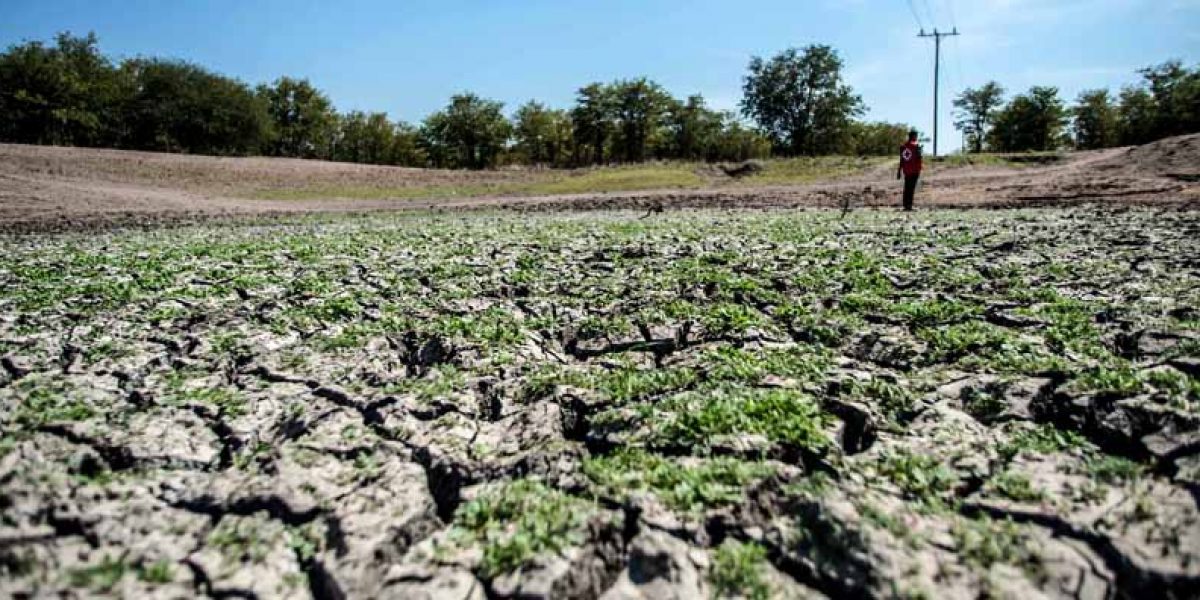In turn, many economies in Southern Africa which are dependent on agriculture will feel the impact. The effects of climate change are already being felt. The 2015 agricultural season in Southern African was considered the driest in 35 years.
Five countries in the region – Swaziland, Lesotho, Malawi, Namibia and Zimbabwe – declared national drought disasters. Eight of South Africa’s nine provinces and the southern and central areas of Mozambique declared partial drought emergencies.
Massive crop failures were experienced across the region. This led to a deficit of 9.3 million tons in cereal crop harvests. On top of this 643 000 cattle were estimated to have died in the drought. Because of these agricultural failures, food insecure populations increased by 31%. This implied that more than 40 million people needed humanitarian assistance.
This is a massive problem for the region. It requires adaptation and mitigation strategies to cope with the changing climate.
Adaptation and mitigation
Southern Africa is home to a large number of livestock species estimated at 64 million cattle, 39 million sheep, 38 million goats, seven million pigs, one million horses and 380 million poultry. A large proportion is indigenous or varied degrees of crossbreeds that are kept by smallholder traditional farmers.
To develop effective and appropriate adaptation and mitigation strategies it is crucial to understand the impact of climate change on different livestock and crops. For example, overall warmer temperatures are likely to cause heat stress in cattle raised on natural pastures and in feedlots.
And hotter conditions as well as low rainfall will reduce the quantity and quality of forage and crops. This in turn will reduce growth performance and poor meat quality of grazing livestock.
Intensive livestock production systems will also be affected. Increased temperatures will:
- make feed more expensive,
- reduce reproductive performance,
- reduce milk yield,
- increase incidence of diseases and high livestock mortality rates.
Strategies to cope
As a mitigation strategy farmers should make use of livestock species or breeds that are heat and drought tolerant, disease and parasite resistant.
Some species, such as goats and sheep, are likely to adapt to hot and dry conditions better than cattle, for example. Goats and sheep can use low quality forage and browse more efficiently. They use less water because of well developed retention systems in their kidneys. They could therefore be a sustainable substitute for cattle in some instances.
When it comes to cattle, some breeds will manage better than others. Indigenous Sanga cattle breeds like Nguni, Tuli and Tswana are known for their good mothering ability, longevity, high fertility, disease and parasite resistance. They’re also able to utilise low quality low quality feeds.
These breeds can be used as female lines in crossbreeding programmes, for example Angus bulls vs Sanga cows. Crossbreeding is used to improve the efficiency of meat production in indigenous breeds or to increase the adaptability of exotic breeds.
How farmers are adapting
Several mitigation strategies are already being used in both intensive farming environments as well as among smallholder farmers. For example, mechanical cooling including forced ventilation, evaporative cooling and shading (natural and artificial) are being used under intensive production systems in the commercial sector.
Alternative supplements, which can reduce the effects of heat stress, are also recommended. These include minerals like potassium, sodium and chlorine and the replacement of rapid fermentable carbohydrates, like maize, with saturated fatty acids.
And farmers are beginning to use commercial dietary supplements like poultry litter, urea blocks/licks, cultivated pastures (rain-fed or irrigated) and conserved forages like silage, hay and crop residues.
There are also prospects for using novel feeds from various sources like horticultural crop residues and byproducts from the wine industry to provide alternative sources of protein and energy.
Other steps farmers have taken to cope with drought and long dry spells include:
- reducing livestock numbers,
- changing livestock composition,
- diversifying and altering the timing of operations,
- introducing rotational grazing and multi-species grazing, and
- reseeding natural pastures with improved grass and legumes.
Surprisingly very few countries in the region have national climate change policy frameworks in place. Malawi is an exception. It has adopted a national climate change response framework and also has a climate change investment plan in place.
In South Africa the Western Cape province has adopted a climate change framework and implementation plan. But clearly countries have a lot of catching up to do to help farmers manage.
Kennedy Dzama is a distinguished Professor at Stellenbosch University and Tawanda Marandure is a PhD student Theoretical Production Ecology, Agricultural Philosophy, Animal Science at Stellenbosch University. This article was first published in The Conversation.








